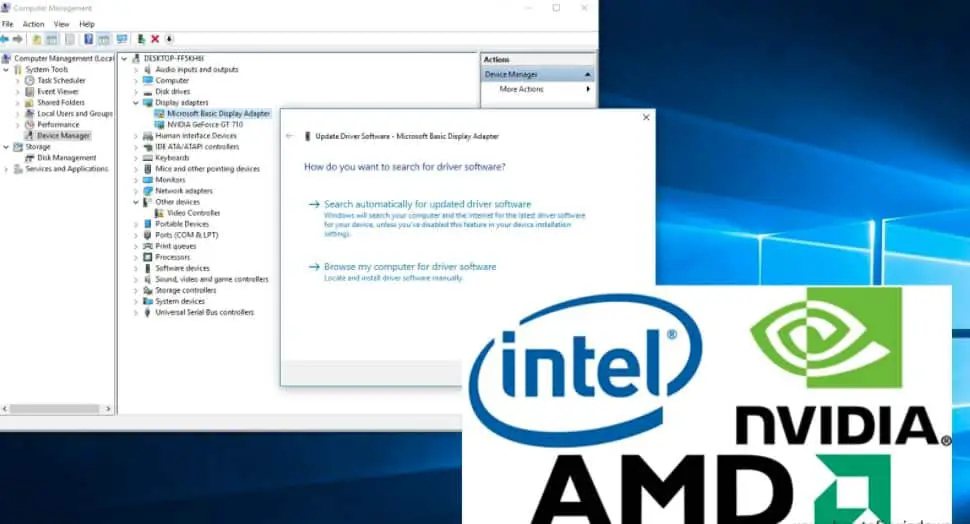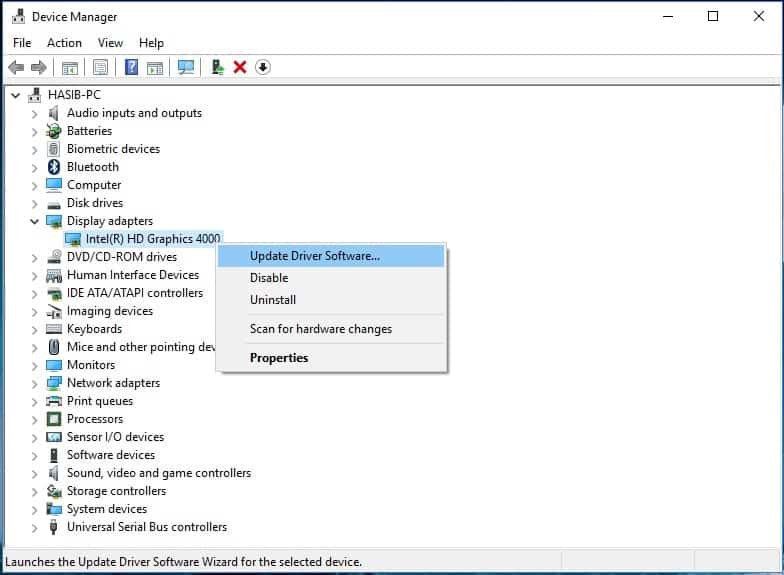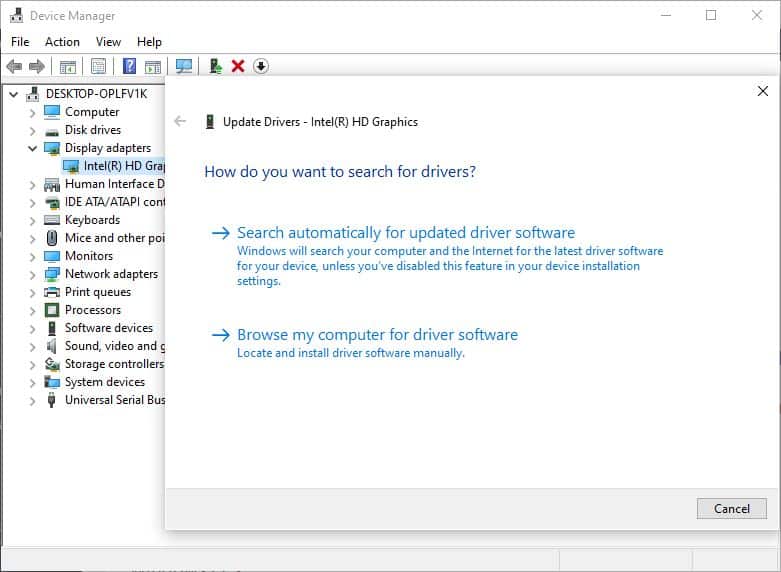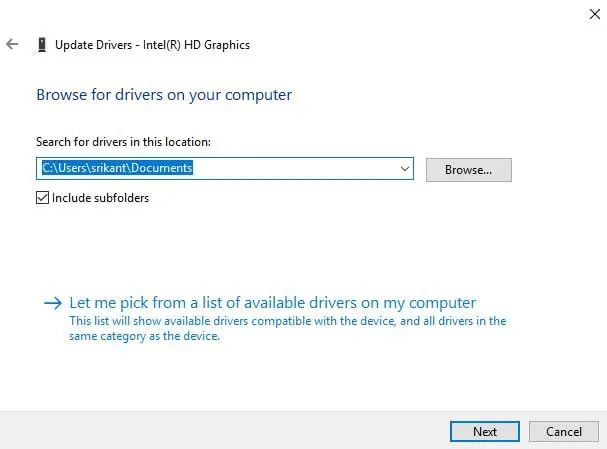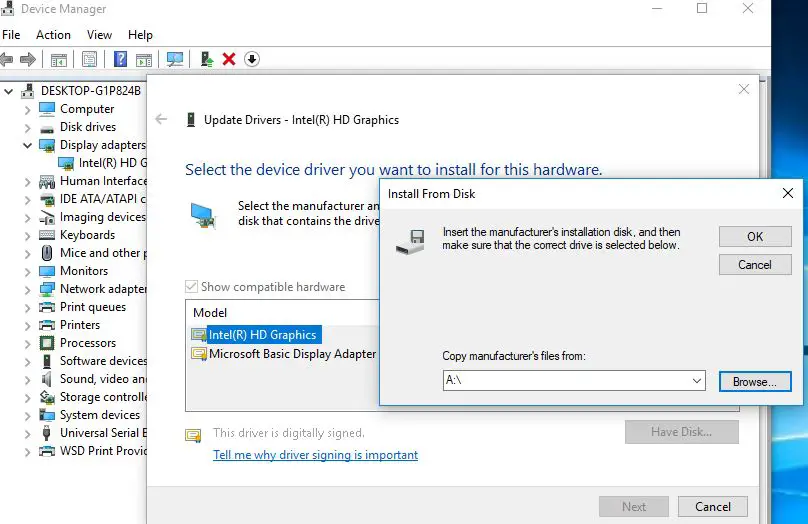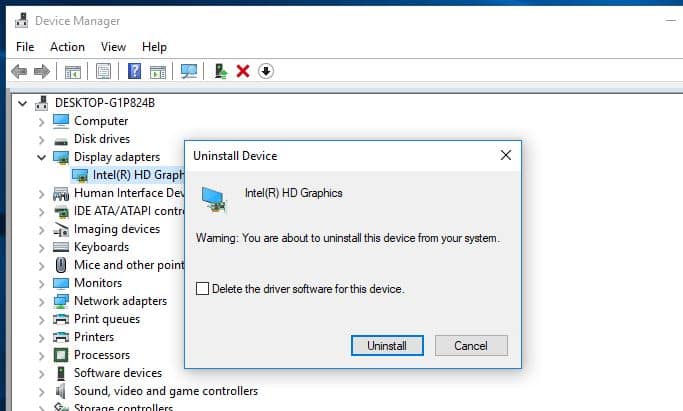Incompatible, outdated, or Corrupted Device drivers Cause Different Problems on Windows computers. Such as cause Different blue Screen Errors at startup, Windows Stuck At Black Screen At startup, Audio Sound Not working, No internet connection and more and more. Especially after Upgrading to the latest Windows 10 version 22H2, most users report laptop / Computer not functioning properly, Devices not working, occur different BSOD errors, Network & internet connection or Audio sound not working etc. These problems cause either the installed Graphics Driver, Audio or Network Adapter drivers is not compatible with the current Windows version or the driver get corrupted and not function properly. And you must play with Device Drivers Such As Disable, Roll Back, Uninstall or Update Device Drivers in Windows 10 To Deal with issues like this. That’s why most of the time while performing Troubleshoot we recommend update / Roll Back Device Drivers.
On Windows computer Device Manager lets you View all Installed Hardware Device Driver list with its properties. And Allow you to Tweak the hardware settings, identify device drivers for each device, view and change settings, and properties, and install, uninstall, update, rollback, enable, and disable the drivers.
How to Update Device Drivers in Windows 10
Hope you understand the importance of Device Drivers on Windows computers/Laptops. Now let’s understand What is Different on Roll Back Driver, Re-install Device Driver, Disable, Uninstall and Update Device Driver. And How to perform this action to fix Different Windows Startup problems, and resolve Driver related problems such as audio sound not working, No Network connection etc.
Note: Bellow Steps Are Applicable To Update, Rollback, Re-install, Uninstall or Disable All Windows 10, 8.1 and 7 editions.
Windows Device Manager Allows performing All these Actions such as rollback Driver, Re-install Driver, Update Driver etc.
- Press Windows + R, type devmgmt.msc and ok
- This will open the Device Manager and display all installed driver list
Now Locate the driver, and right-click on it. You will see options to:
- Update Driver Software
- Disable Device
- Uninstall Device Driver.
- Scan For Hardware Changes
- Properties
Update Drivers in Windows 10
The First Thing Update the Device Drivers. To update the Device driver right click on the problematic Driver (Ex: Display Driver) and select Update Driver. The wizard will open and offer you two options:
- To search online automatically
- To browse the driver software on your computer
- Select and click on the option you want, to proceed further.
- If you select Search Online Automatically windows will check for the latest available Driver software if found any this will download and install it for you.
- After that Restart Windows to take the changes effectively.
- Or you Can Select browse my computer for driver software.
(That cause first Visit the Device Manufacturer’s website ( for ex Graphics Driver like AMD, Intel, Nvidia ) and download the latest available Driver. ) Select the Driver you downloaded before from the manufacturer’s website and follow the on-screen instructions.
Also, you can Install the pre-build Driver by click on let me pick from a list of available drivers on my computer.
- Next Select the driver or you can select have a disk option
- And set the driver path which you have downloaded from the manufacturer’s website and follow the on-screen instructions to install the same.
- After That Restart Windows to take effect the changes.
Re-install Driver
Follow the steps below to reinstall the device driver on Windows 10, 8.1 and 7.
- Open Device Manager,
- Right-click the problematic Driver and Select Uninstall Device.
- Now Restart windows to completely remove the driver from your device,
- On the Next start, windows install the driver software automatically.
- Or you can visit the device manufacturer’s Website to download the latest available driver version.
- After That open the Device Manager to check the recently removed driver is installed automatically.
- If not click on Action and select Scan for hardware changes as shown below image.
- This will scan and install the Device,
- If driver installation failed with the Yellow triangle mark
- Then Right-click on it and select Update driver
- Select Browse my computer for driver software
- Select the Driver path which you download from the manufacturer’s website
- And follow on-screen instructions to install the same.
- After that Restart Windows to make changes effective.
Rollback, Disable, Enable Drivers
Now, let’s know about the Roll Back Driver option. This option is only available or applicable if you recently Upgrade the driver software. If after Windows Upgrade or Recent driver update the problem started then you can perform Roll Back option to revert the current driver to the previous version. To roll back driver update Windows 10
- Open Device manager
- Right-click on the problematic Driver and select properties.
- A new pop-up window will open here move to Driver Tab.
Here you will see more options:
- Update Drivers: This will start the Hardware Update Wizard.
- Roll Back Driver: This will uninstall the most recently updated driver and will roll back your configuration, to the earlier version. You may need to roll back a driver if you find that your device fails after updating the driver.
- Disable (or Enable) Driver: This will disable the Driver, till you enable it back again.
- Uninstall Driver: This will uninstall completely the driver files and registry settings for the selected hardware.
Rollback driver update Windows 10
- Now click on the RollBack Driver option,
- Select the Appropriate Reason why you roll back the driver
- And follow on-screen instructions to perform Roll back the current driver version to the previous one.
- After that Restart windows To take effect the changes and check the currently installed driver is working properly.
Uninstall Drivers
Also If you wish to uninstall the driver, click on Uninstall. For example
- Open Device Manager,
- Right, click on the problematic Driver
- For Example Graphics Driver and select Uninstall.
- When the confirmation popup will open checkmark on Delete the Driver Software for this device and click uninstall.
- After that Restart Windows to completely Remove the problematic Driver.
I hope this post helps to easily Disable, Roll Back, Uninstall, Re-install or Update Device Drivers in Windows 10.
Also read:
- Fix We can’t install some updates because other updates are in progress
- Windows cannot initialize the device driver for this hardware (Code 37)
- Solved: Device Manager Error This device cannot start. (Code 10)
- Solved: BSOD error Driver irql_not _less_or equal Windows 10
- Solved: Error Code 0x80070057 installing Hyper-V in Windows 10
- The default gateway is not available After Windows 10 upgrade
